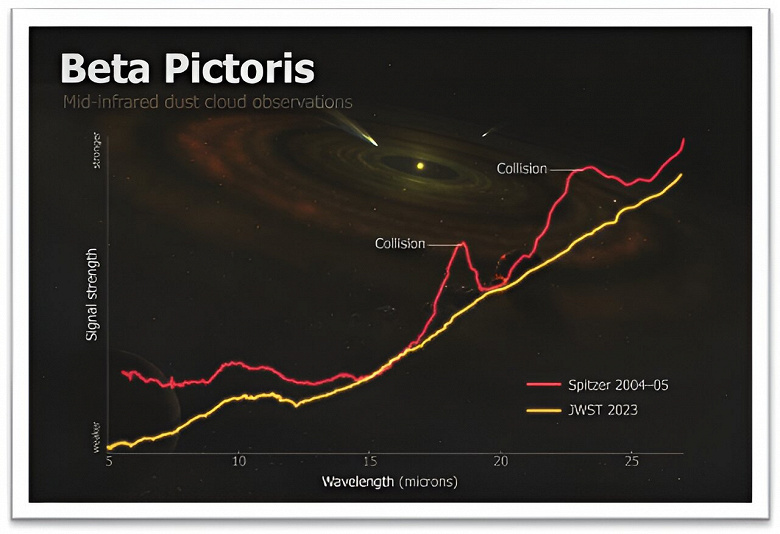Researchers have captured images of an asteroid collision in Beta Pictoris, a nearby star system known for its early formation and vigorous planet formation.
Observations made with the James Webb Space Telescope (JWST) found significant changes in the energy profile of dust around Beta Pictoris compared to Spitzer Space Telescope observations in 2004 and 2005. A team of researchers analyzed the composition and size of dust particles in areas previously studied by Spitzer.
Scientists have found that the dust recorded by Spitzer has disappeared, indicating the collision of asteroids and other objects. The collision turned the bodies into tiny dust, particles smaller than pollen or powdered sugar, said Christine Chen, an astronomer at Johns Hopkins University who led the study.
«We suspect that all this dust is a remnant of the dust we saw in the 2004 and 2005 data. The new JWST data show that we are witnessing the aftermath of a rare and catastrophic event between large asteroids, which has fundamentally changed our understanding of this star system,», Chen said.
Initially, the dust near the system's central star heated up, and its thermal radiation was detected by Spitzer's instruments. However, now that the dust has cooled as it moves away from the star, it no longer emits these thermal characteristics.
Chen added that the amount of dust is about 100,000 times the size of the asteroid that wiped out the dinosaurs on Earth.
Beta Pictoris is only 20 million years old, which is a key stage when giant planets form, and the terrestrial planets are still forming. The researchers hope to determine whether the collision is affecting the larger planet-forming processes in this system.
«The question we're trying to answer is whether this whole process of forming terrestrial and giant planets is common or rare. And an even more fundamental question: How rare are planetary systems like the Solar System?» said study co-author Kadin Worthen, a Johns Hopkins University astrophysicist.
The results of the study were presented at the 244th meeting of the American Astronomical Society in Madison, Wis.

